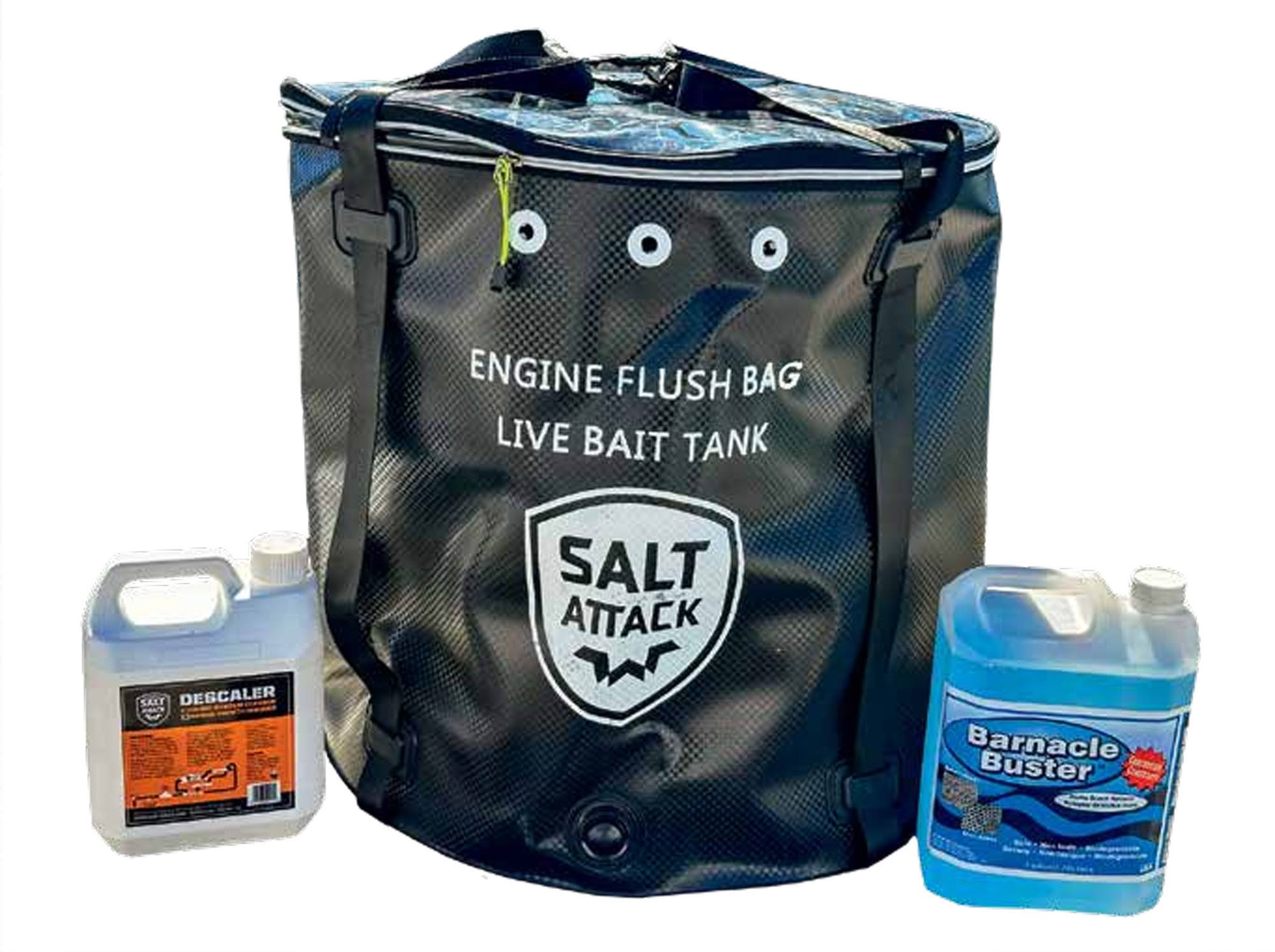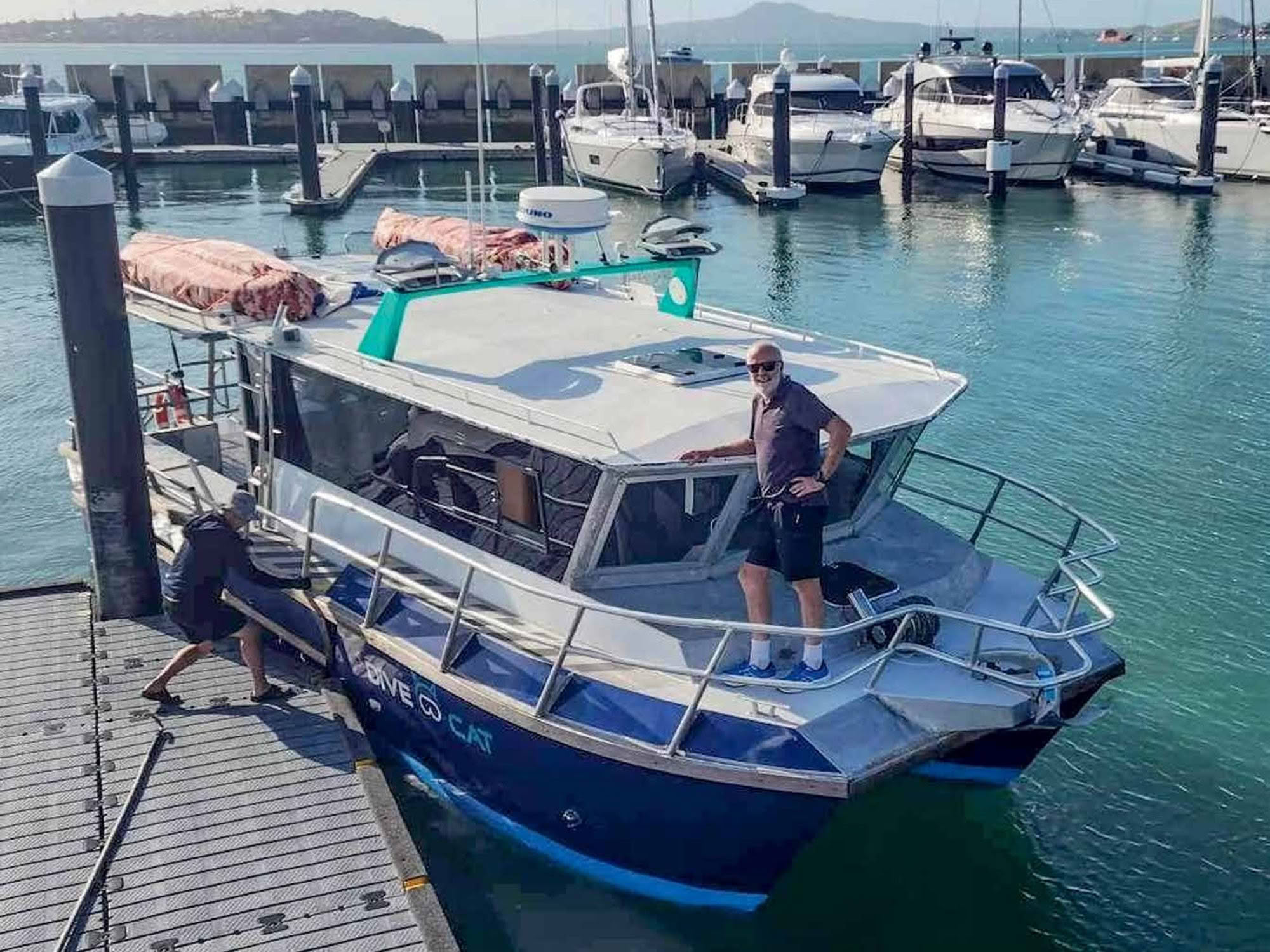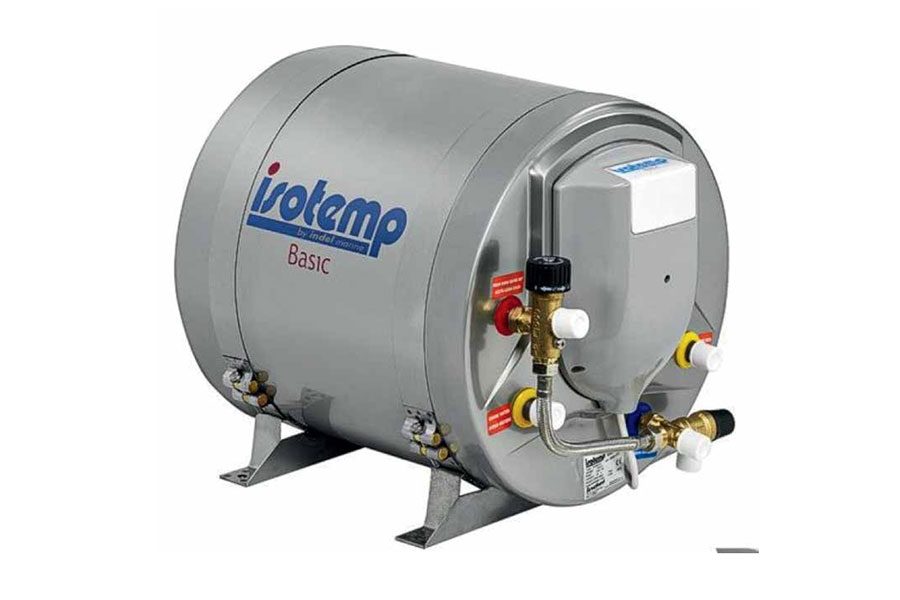

A few months ago, I wrote about the design and installation of a new galley layout for my boat Divecat. During that process I installed a new hot water system for the shower and sink. Regular readers will recall that the installation was not quite finished, and I still needed to get a certified gas-fitter to complete the gas installation.
Well, if I had consulted with him earlier, I would have known there was an issue with my layout, and I could have saved myself a considerable amount of wasted effort. The problem lies with the gas califont, probably the main component of the vast majority of marine (and recreational vehicle) hot water systems in the country. All gas appliances are regulated in New Zealand and there is a legal standard covering how they are to be installed: AS/ NZS5601.2:2013 Gas Installations – LP Gas Installations In Caravans And Boats For Non-Propulsive Purposes. Like all good government documents, it is incredibly hard to get hold of a copy to consult.
If you do manage to get hold of a copy and can make sense of the techno-legal jargon, the important detail is the fact that a califont cannot be installed inside an enclosed area on a boat or caravan. Installing it in a freely venting area like out in the cockpit may be acceptable, but every location still requires approval by a certified gas-fitter. Apart from the obvious safety issue around the chosen location, there is also the matter of insurance cover – many companies now require even recreational vessels to undergo a survey, including a gas compliance certificate. So, my already-installed califont inside the cabin area does not meet the regulations and will need to be removed.
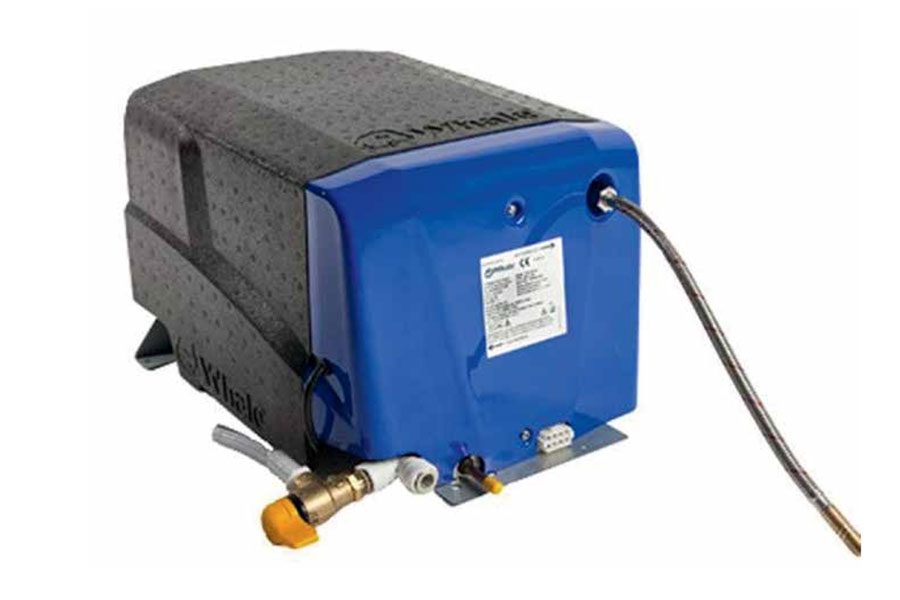
Since I no longer have a suitable external cabin wall on my boat (the califont needs to be protected from any rain and wind, but in an area with open sides), it seems that a califont will not work for me. This was a great disappointment since it is by far the cheapest and simplest solution. Overall, a califont is reliable, easy to operate and provides hot water on demand exactly when needed. Instead, I need to find another solution if I am to keep myself in hot water (and out of a different sort of legal hot water!). And the alternatives are, invariably, more expensive… So once again I have had to spend time and effort researching what my options are. Luckily there are quite a few possibilities, including other heat-exchanger calorifiers, LPG-fired, 12-volt electric, 240-volt electric, and diesel hot water heaters. A number of these provide for combinations of energy input. For example, many of the heat exchanger options also have an electric element. With a bit of searching, you can find the right combination to fit your available space and water needs.
Most marine water heating solutions involve a small hot water cylinder of around 12 litres. These need time to heat up, so unfortunately cannot provide that glorious on-demand hot water that I had been looking forward to from the califont. And because my boat is outboard-powered, I do not have the option of running a heat exchanger off the engine’s cooling system, sometimes called a calorifier. This is an efficient source of heat and one of the benefits of an inboard engine, but it is not usually an option for an outboard-powered vessel.
On the other hand, the electric options, whether 12-volt or 240-volt, require a considerable amount of power. Fortunately, even at idling speed the alternator output on each of my Yamaha F250 outboards exceeds 20 amps, while at anything over 2,000rpm they hit the maximum of 70 amps. Charging batteries can thus easily be achieved by simply running one outboard for a time, so the heavy power requirement is a ‘solvable’ problem.
And so my first option, and the easiest in terms of installation, is a 12-volt electric water heater. There are several well-known brands, including Quick and Whale. The limitation of these systems is the current draw – even a small 300-watt heater draws 25 amps at 12 volts, which is a huge drain on most house batteries and requires correctly-rated power cables to prevent them overheating.

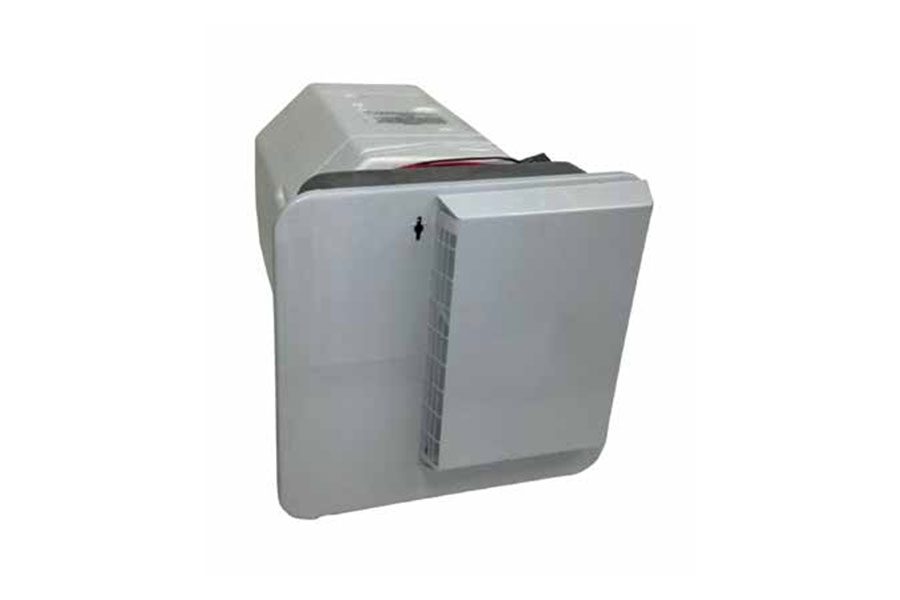
A unit like this would take just under half an hour to heat 10 litres of water up to 50°, suitable for a shower or washing dishes. To accommodate one the capacity of the house battery may need to be increased considerably. Prices start at around $1,200, and these are the easiest solution in terms of installation.
The next step up is a 240-volt water heater, which is an option if you have mains power available on your boat. There is a larger range of compact marine-grade hot water cylinders available, like the Isotemp 30-litre model from Burnsco Marine. This draws 750 watts and heats up to 70°. It also has a heat exchanger connection, although in my case this is not going to be any help. With double the capacity and double the wattage, it has more capability but also draws more current than a typical 12-volt system.
Even if your boat does not already have mains power, a 240volt unit may still be an option. The hot water cylinder can be pre-heated using shore power before heading out, and then an onboard inverter can provide the somewhat lower power consumption that is required to maintain the temperature. If you don’t have a genset on board but occasionally want more hot water, then a portable petrol generator could adequately power a hot water cylinder. Although noisy and less convenient than a marine genset, these start at about $650 and may be an option for intermittent use.
There are also a few options for a dual-voltage 12/240-volt hot water systems, such as the Australian-made Duoetto Mk2. The difference is in terms of heating speed – at 240 volts it draws 1,000 watts and heats up 10 litres to 70° in 45 minutes, while on a 12-volt supply this will take over two hours. This is a neat little unit, and the prices are very attractive at around $1,000 including shipping to New Zealand.
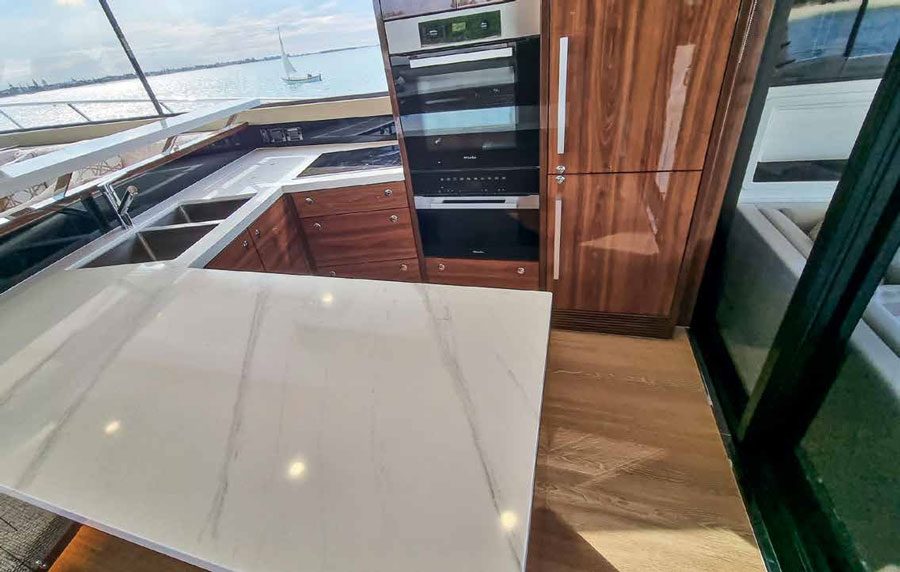
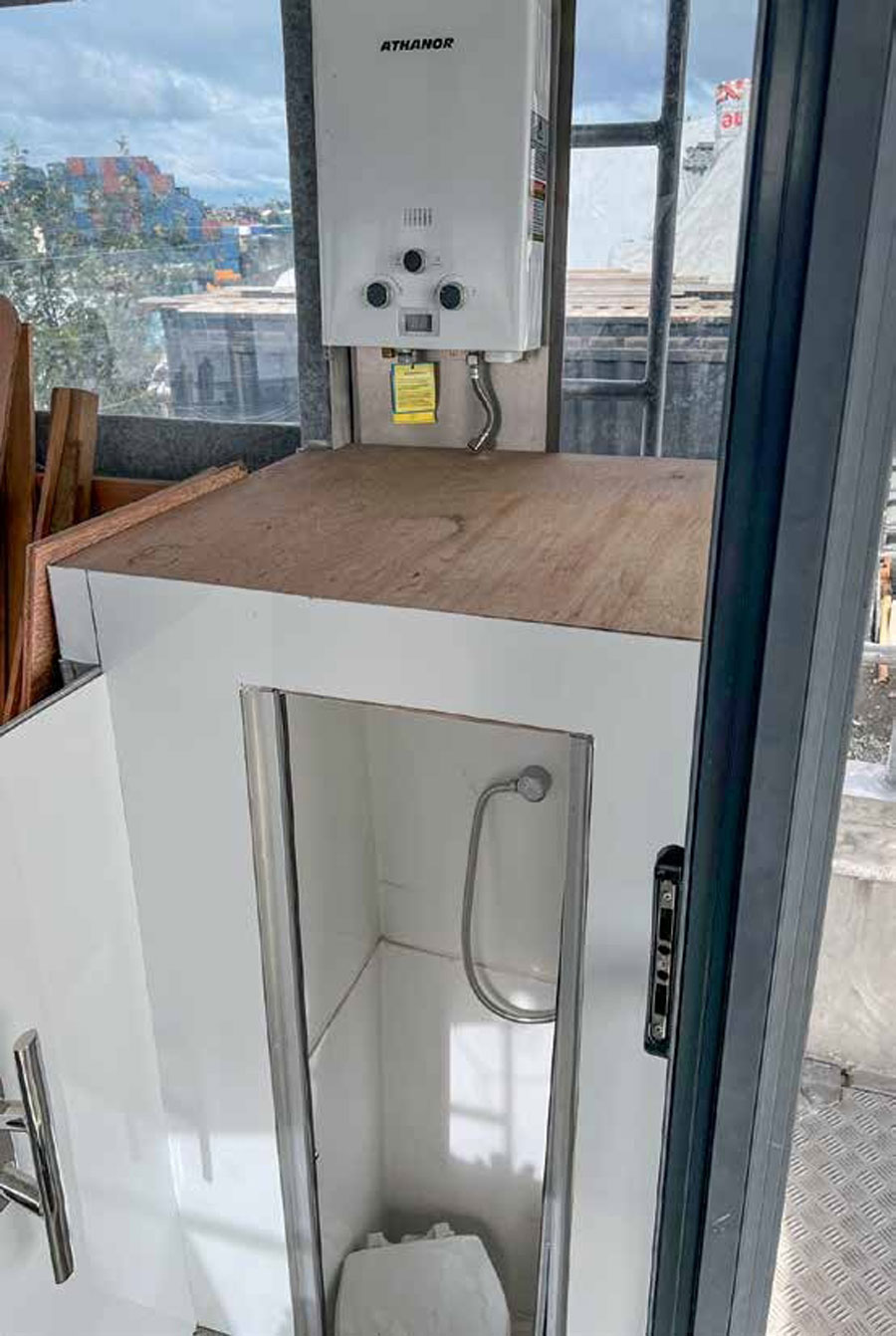
There are other LPG-fired hot water units certified for marine and RV use. These differ from a califont in that there is no exposed flame. They have an enclosed combustion system – the workings of the system are completely enclosed in a sturdy and airtight metal enclosure that only opens to the outside. The gas flame is never exposed to the interior of the boat. Unfortunately, being a gas unit, they still need to be installed by a certified gasfitter, but they do benefit from the improved heat output of gas.
These gas units come in two different types – those with a hot water cylinder, like the Whale brand from Burnsco, or tankless systems. The Whale is interesting because it is gasfired but also has 240-volt heating elements inside its 13-litre tank. This allows it to be heated through either option, or even both together, to speed up heating.
Tankless LPG systems are the only non-califont option that also supply continuous hot water. They were developed for the RV market where there may not be enough space for a separate hot water cylinder. They do require an outward-facing wall panel which limits installation options, and once again, a gasfitter needs to certify the installation.
And lastly, a diesel water heater provides a great combination of safety, high thermal output and lower running costs. A diesel-powered system rapidly produces hot water, but to prevent damage to the expensive combustion unit, they always use a glycol fluid circuit. The system then transfers the heat energy to fresh water through a heat exchanger or calorifier. They are compact, quiet and very efficient, with the water heating up to shower temperature in as little as 10 minutes. The disadvantage of these solutions is simply the cost, with a system like the Eberspacher 4kW diesel water heater kit having a list price of $3,495.
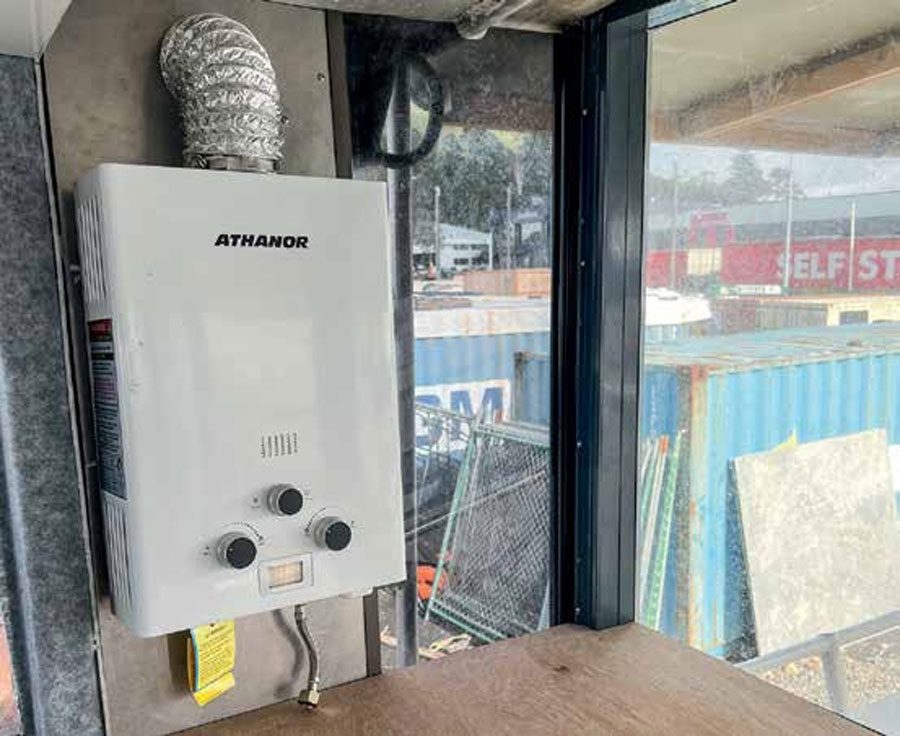
Combination diesel systems are also available, like the ITR Hurricane Hydronic heating system from So-Pac Marine that produces hot water and also warm air. In addition to the diesel heat source, this unit also includes a supplemental 240-volt immersion element for use when shore power is available. These are a neat all-in-one solution and may be attractive for larger vessels with complex heating requirements.
Because of the restricted exterior wall space, I cannot install a tankless gas system in my boat. I would like the heat efficiency of a diesel solution, but the price tag exceeds my available budget. I will most likely not be installing 240-volt power on board, leaving a 12-volt system as the logical choice. The decision is aided by these being suited to DIY installation, although if I go for a dual 240-volt and 12-volt system, then I will need an electrician for the high voltage circuit. A future article will cover the installation. BNZ


